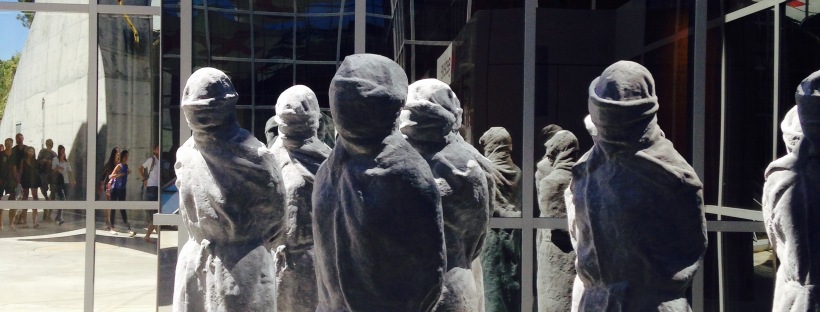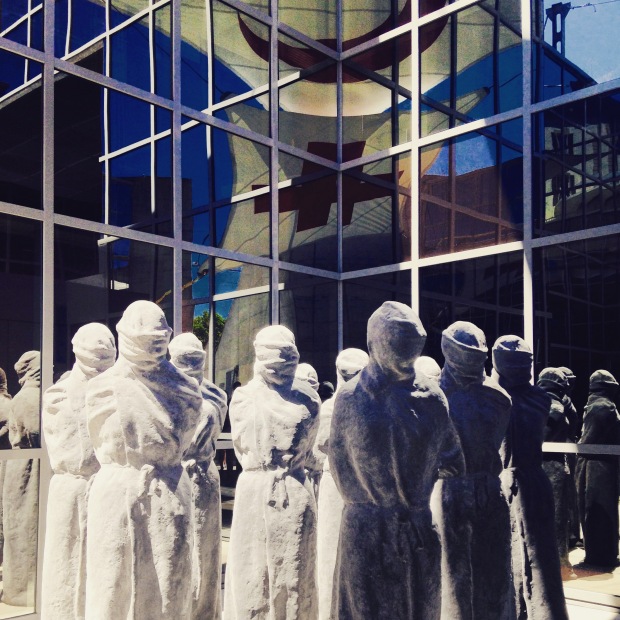Yesterday I finally got to visit the Red Cross Museum, which has been on the top of my list since arriving but I haven’t found the time or emotional energy to tackle. After visiting, I can say that I highly recommend it.
“The Petrified Ones,” sculptures outside the entrance of the museum
The museum is modern, stylish, and interactive, and your ticket comes with a free audio guide that speaks automatically as you move through the museum.
The museum is divided into three parts, following three main pillars of the organizations: reuniting families, reducing natural risks, and restoring human dignity. There is also an interactive room near the entrance that lets you follow the details of the past 150 years of the Red Cross’s work around the world.
First I explored the section on defending human dignity. The museum starts with a history of the Red Cross and international humanitarian declarations and conventions, which is pretty darn cool. One thing I always forget is just how old the Red Cross is – for some reason I assume it came out of one of the World Wars, but it was actually conceived by Henri Dunant following his observations at the Battle of Solferino in 1859, part of the Austrian-Sardinian War. The organization has undergone many transformations over the years and now consists of 97 million volunteers and members worldwide. There was the original copy of the Geneva Convention – nerd alert! Next came a room which largely featured artwork and handicrafts created by political prisoners and displaced individuals. There was also a section where you could listen to different witness testaments about a wide range of experiences.
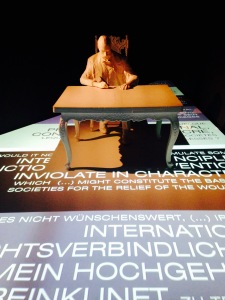 A sculpture of Henri Dunant, showing excerpts in several languages from his memoirs of Solferino
A sculpture of Henri Dunant, showing excerpts in several languages from his memoirs of Solferino
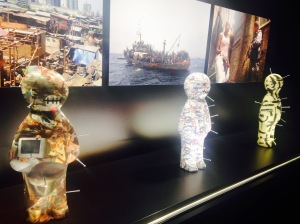 Voodoo dolls representing three major threats to human dignity – poverty, migration, and urban violence.
Voodoo dolls representing three major threats to human dignity – poverty, migration, and urban violence.
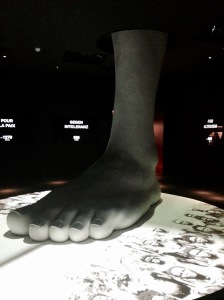 The giant foot. Under it are images from humanitarian crises, and projected on screens all around it are humanitarian conventions and declarations going back several centuries.
The giant foot. Under it are images from humanitarian crises, and projected on screens all around it are humanitarian conventions and declarations going back several centuries.
Next I visited the section of reuniting families, which started with an impressive display of about 6 million identification cards for 2 million individuals missing the wake of the first world war. The audioguide walked you through an exercise on searching and cataloguing these old cards before jumping to more modern-day methods of identification, including photo walls and the Red Cross’s current online database. Perhaps most moving was a display of real letters written from displaced individuals and delivered back to their families through the Red Cross – from current day crises all the way back to World War II. Some were written by children, reassuring their parents that they were safe – so strange to see familiar childlike handwriting staring at you as a memory of a horrible conflict. At this point I had to take a moment to stop and collect myself – there was a wall of photographs of children displaced from their families during the Rwandan genocide, and most of those children were my age, as photo identification was a tool primarily used for children too young or too traumatized to provide identifying details about their families or homes. At a time when I was entering preschool, these unknown peers of mine were lining up to be photographed in a desperate search to find their parents or confirmation of their parents’ deaths.
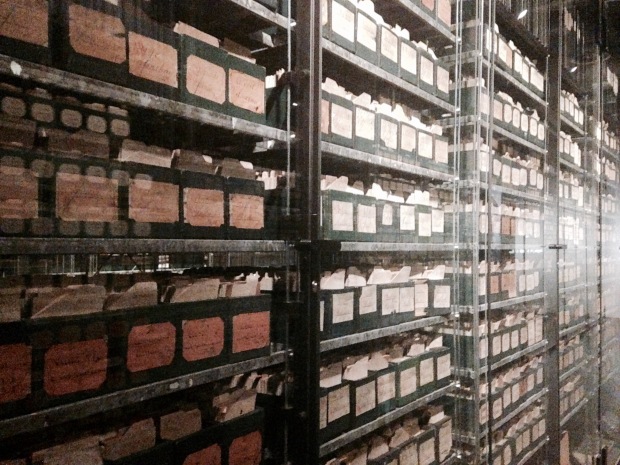 Identification cards for WWI soldiers, declared a monument to human memory by UNESCO
Identification cards for WWI soldiers, declared a monument to human memory by UNESCO
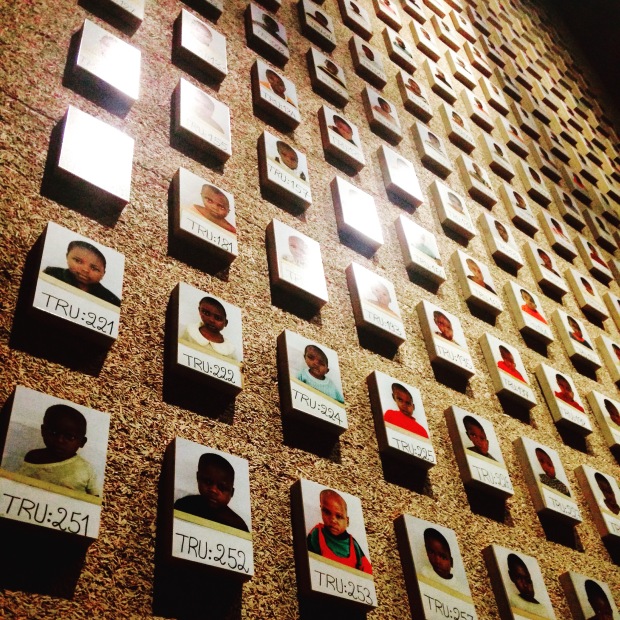 Photo identifications used to help reunite young children with family members following the Rwandan genocide.
Photo identifications used to help reunite young children with family members following the Rwandan genocide.
The final section on reducing natural risk was pretty funny – I know, unexpected. But it featured a wall of vintage nutrition and sanitation posters, followed by some very strange digital stop-motion displays about alert systems and human sanitation.
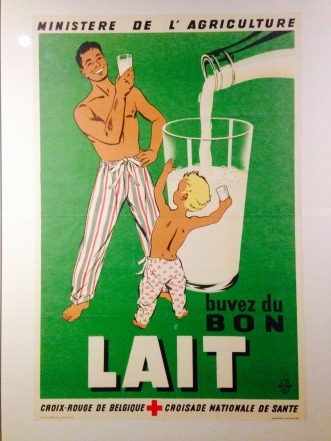
This one might be my favorite. How adorable.
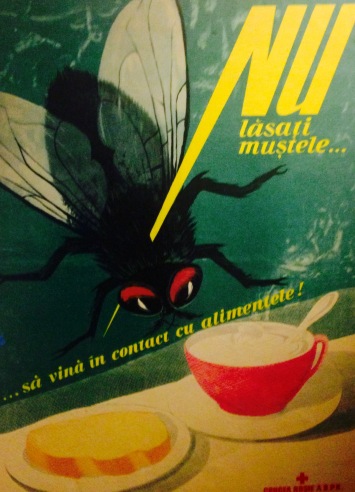
“Don’t let the fly in” – AKA cover your food!
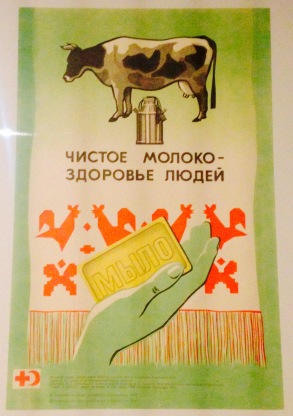
I believe this was along the lines of, “For pure life, drink milk!”
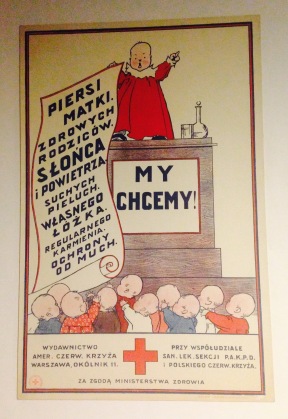 Angry Polish babies declaring that they want clean air, sunshine, and their mothers’ breasts.
Angry Polish babies declaring that they want clean air, sunshine, and their mothers’ breasts.
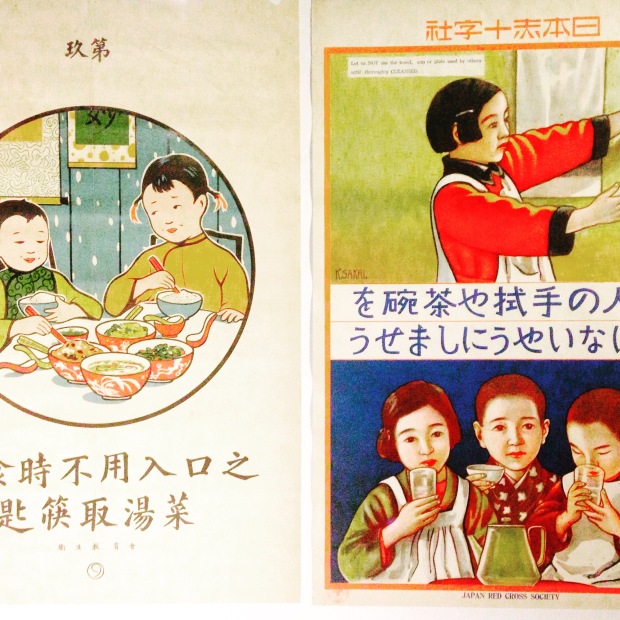 Chinese posters about washing your hands and good table hygiene.
Chinese posters about washing your hands and good table hygiene.
Overall, a worthwhile visit – though be prepared for some reflective, slightly depressed time, especially when you realize how many of these humanitarian crises the US has been involved in or remained silent to.
